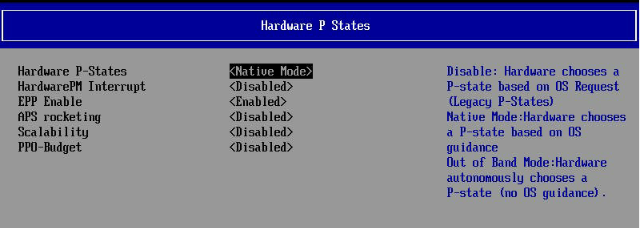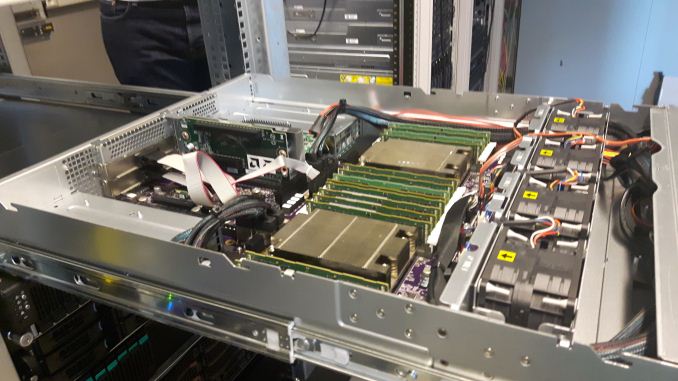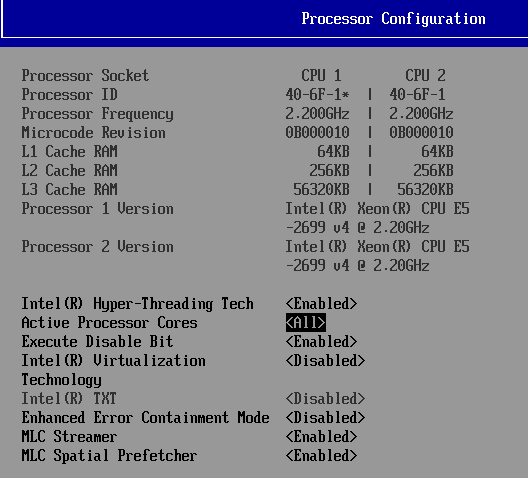Sizing Up Servers: Intel's Skylake-SP Xeon versus AMD's EPYC 7000 - The Server CPU Battle of the Decade?
by Johan De Gelas & Ian Cutress on July 11, 2017 12:15 PM EST- Posted in
- CPUs
- AMD
- Intel
- Xeon
- Enterprise
- Skylake
- Zen
- Naples
- Skylake-SP
- EPYC
Testing Notes
For the EPYC launch, AMD sent us their best SKU: the EPYC 7601. Meanwhile Intel gave us a choice between the top bin Xeon 8180 and the Xeon 8176. Considering that the latter had 165-173W TDP, similar to AMD's best EPYC, we felt that the Xeon 8176 was the best choice.
Unfortunately, our time testing the two platforms has been limited. In particular, we only received AMD's EPYC system last week, and the company did not put an embargo on the results. This means that we can release the data now, in time to compare it to the new Skylake-SP Xeons, however it also means that we've only had a handful of days to work with the platform before writing all of this up for today's embargo. We're confident in the data, but it means that we haven't had a chance to tease out the nuances of EPYC quite yet, and that will have to be something we get to in a future article.
Meanwhile we should note that we've had to retire the bulk of our historical benchmark data, as we upgraded both our compiler and OS (see below). Due to this, we only had a very limited amount of time to run additional systems, and for that reason we've opted include Intel's Xeon E5-2690. The Sandy Bridge-EP processor is about 5 years old, and for customers who aren't upgrading their servers every single generation, it's these servers that we believe are most likely to get upgraded in this round. So for server managers looking at finally buying into new hardware, you can get an idea of much return of investment you get.
Benchmark Configuration and Methodology
All of our testing was conducted on Ubuntu Server "Xenial" 16.04.2 LTS (Linux kernel 4.4.0 64 bit). The compiler that ships with this distribution is GCC 5.4.0.
You will notice that the DRAM capacity varies among our server configurations. The reason is that we had little time left before today's launch embargo. Removing any hardware is always a risk, so we decided to run our tests without significantly changing the internal hardware of the systems we received from AMD and Intel (SSDs were still replaced). As far as we know, all of our tests fit in 128 GB, so DRAM capacity should not have much influence on performance. But it wil have a impact on total energy consumption, which we will discuss.
Last but not least, we want to note how the performance graphs have been color-coded. Orange is AMD's EPYC, dark blue is Intel's best (Skylake-SP), and light blue is the previous generation Xeons (Xeon E5-v4) . Gray has been used for the soon-to-be-replaced Xeon v1.
Intel's Xeon "Purley" Server – S2P2SY3Q (2U Chassis)
| CPU | Two Intel Xeon Platinum 8176 (2.1 GHz, 28c, 38.5MB L3, 165W) |
| RAM | 384 GB (12x32 GB) Hynix DDR4-2666 |
| Internal Disks | SAMSUNG MZ7LM240 (bootdisk) Intel SSD3710 800 GB (data) |
| Motherboard | Intel S2600WF (Wolf Pass baseboard) |
| Chipset | Intel Wellsburg B0 |
| BIOS version | 9/02/2017 |
| PSU | 1100W PSU (80+ Platinum) |
The typical BIOS settings can be seen below; we enabled hyperthreading and Intel virtualization.
AMD EPYC 7601 – (2U Chassis)
Five years after our "Piledriver review", a new AMD server arrives in the Sizing Servers Lab.
| CPU | Two EPYC 7601 (2.2 GHz, 32c, 8x8MB L3, 180W) |
| RAM | 512 GB (16x32 GB) Samsung DDR4-2666 @2400 |
| Internal Disks | SAMSUNG MZ7LM240 (bootdisk) Intel SSD3710 800 GB (data) |
| Motherboard | AMD Speedway |
| BIOS version | To check. |
| PSU | 1100W PSU (80+ Platinum) |
Intel's Xeon E5 Server – S2600WT (2U Chassis)
| CPU | Two Intel Xeon processor E5-2699v4 (2.2 GHz, 22c, 55MB L3, 145W) Two Intel Xeon processor E5-2690v3 (2.3 GHz, 14c, 35MB L3, 120W) |
| RAM | 256 GB (16x16GB) Kingston DDR-2400 |
| Internal Disks | SAMSUNG MZ7LM240 (bootdisk) Intel SSD3700 800 GB (data) |
| Motherboard | Intel Server Board Wildcat Pass |
| BIOS version | 1/28/2016 |
| PSU | Delta Electronics 750W DPS-750XB A (80+ Platinum) |
The typical BIOS settings can be seen below.
HP-G8 (2U Chassis) - Xeon E5-2690
| CPU | Two Intel Xeon processor E5-2690 (2.9GHz, 8c, 20MB L3, 135W) |
| RAM | 512 GB (16x32GB) Samsung DDR-3 LR-DIMM 1866 MHz @ 1333 MHz |
| Internal Disks | SAMSUNG MZ7LM240 (bootdisk) Intel SSD3700 800 GB (data) |
| Motherboard | HP G8 |
| BIOS version | 9/23/2016 |
| PSU | HP 750W (Gold) |
Other Notes
Both servers are fed by a standard European 230V (16 Amps max.) power line. The room temperature is monitored and kept at 23°C by our Airwell CRACs.














219 Comments
View All Comments
msroadkill612 - Wednesday, July 12, 2017 - link
It looks interesting. Do u have a point?Are you saying they have a place in this epyc debate? using cheaper ddr3 ram on epyc?
yuhong - Friday, July 14, 2017 - link
"We were told from Intel that ‘only 0.5% of the market actually uses those quad ranked and LR DRAMs’, "intelemployee2012 - Wednesday, July 12, 2017 - link
what kind of a forum and website is this? we can't delete the account, cannot edit a comment for fixing typos, cannot edit username, cannot contact an admin if we need to report something. Will never use these websites from now on.Ryan Smith - Wednesday, July 12, 2017 - link
"what kind of a forum and website is this?"The basic kind. It's not meant to be a replacement for forums, but rather a way to comment on the article. Deleting/editing comments is specifically not supported to prevent people from pulling Reddit-style shenanigans. The idea is that you post once, and you post something meaningful.
As for any other issues you may have, you are welcome to contact me directly.
Ranger1065 - Thursday, July 13, 2017 - link
That's a relief :)iwod - Wednesday, July 12, 2017 - link
I cant believe what i just read. While I knew Zen was good for Desktop, i expected the battle to be in Intel's flavour on the Server since Intel has years to tune and work on those workload. But instead, we have a much CHEAPER AMD CPU that perform Better / Same or Slightly worst in several cases, using much LOWER Energy during workload, while using a not as advance 14nm node compared to Intel!And NO words on stability problems from running these test on AMD. This is like Athlon 64 all over again!
pSupaNova - Wednesday, July 12, 2017 - link
Yes it is.But this time much worse for Intel with their manufacturing lead shrinking along with their workforce.
Shankar1962 - Wednesday, July 12, 2017 - link
Competition has spoiled the naming convention Intels 14 === competetions 7 or 10Intel publicly challenged everyone to revisit the metrics and no one responded
Can we discuss the yield density and scaling metrics? Intel used to maintain 2year lead now grew that to 3-4year lead
Because its vertically integrated company it looks like Intel vs rest of the world and yet their revenue profits grow year over year
iwod - Thursday, July 13, 2017 - link
Grew to 3 - 4 years? Intel is shipping 10nm early next year in some laptop segment, TSMC is shipping 7nm Apple SoC in 200M yearly unit quantity starting next September.If anything the gap from 2 - 3 years is now shrink to 1 to 1.5 year.
Shankar1962 - Thursday, July 13, 2017 - link
Yeah 1-1.5 years if we cheat the metrics when comparison2-3years if we look at metrics accurately
A process node shrink is compared by metrics like yield cost scaling density etc
7nm 10nm etc is just a name